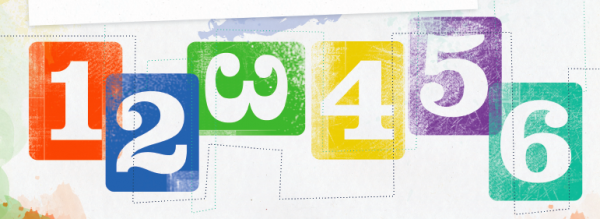IF YOU’VE BEEN STRUGGLING TO BUILD A MARKETING STRATEGY AND PLAN OR IF YOUR CURRENT PLAN ISN’T DELIVERING THE RESULTS YOU DESERVE THIS SIX STEP 10X MARKETING SYSTEM MAY BE EXACTLY WHAT YOU’VE BEEN LOOKING FOR…
Step One: Ideal Client
Identify YOUR Own Ideal Client – start a marketing strategy like a “sharpshooter” and attract exactly the type of leads and buyers that you enjoy working with and that put a high value on the products and services you deliver.
The Definition: The specific profile of the type of client that you can provide the highest value to…and is most likely to be predisposed to buy from you.
 Why It’s Important:
Why It’s Important:
1. Stops “scatter shooting” in your marketing strategy and sales activities.
2. Eliminates several media and marketing choices that do not reach your target market of ideal clients.
3. Allows you to focus and direct your marketing messages so they reach and attract your ideal clients to your business.
4. Repels “non-buyers” that have no interest in your products or services and/or are highly unlikely to choose your business.
How to Identify Your Ideal Client:
1. Start by looking at your current client list and separating the TOP 20% from the rest of your list.
2. Make a list of the common characteristics and traits that the TOP 20% of your customers and clients share – be as specific as possible.
3. Make a list of the traits and characteristics that are the most important to you in an ideal client. NOTE: This list may not include all of the traits and characteristics of some of your current top clients (your top 20%). You’ll likely find that some of your top clients are not necessarily your best clients, yet the value they generate in sales and profits exceeds the price in time, energy, and sometimes even frustration of dealing with them.
4. Write a brief but specific description of the profile of your ideal client based on a combination of traits and characteristics from your current top 20% list and your desired criteria based on what type of client you enjoy and have a high desire to work with.
5. Now that you have a clear description of the profile of your ideal client make a list of where they are found and the different ways they can be reached – including but not limited to print media they read, broadcast media they watch and listen to, groups (clubs, associations, and organizations) they are members of, social media they use, events they attend, neighborhoods they live in, trade journals and newsletters they receive and any other specific “media” they pay attention to.
At this point, you should have a clear “picture” or profile of exactly the type of client you want to attract and a specific list of where they can be found. You should also have a working list of different media sources you can use to reach them.
Step Two: Lead magnet
Create YOUR Own Lead Magnet – qualified leads and buyers will actually “raise their hand” and give you permission to use a marketing strategy and sell to them
The Definition: The offer or promise you make to cause your ideal client to “raise their hand” and give you permission to market and sell to them.
Why It’s Important:
1. Prospects that respond to and request your lead magnet are 100X to 300X more likely to buy from you.
2. Your lead magnet will attract prospects that are already predisposed to have an interest in learning more about your product or service and potentially making a purchase.
3. By “trading” your lead magnet for the contact information of your prospect you will be adding qualified and interested leads to your prospect list so you can continue to market to them.
4. Your lead magnet will not attract “non-buyers” that have no interest in your products or services. This allows you to focus your marketing, advertising, and sales efforts on those prospects that are most likely to become buyers.
How to Create Your Lead Magnet:
1. Make a list of free information that you could share that would be interesting and informative to your target audience that will solve a problem for them or get them closer to a specific goal they have.
Examples include but are not limited to:
Free Reports:
– “Five Biggest Mistakes People Make When Buying _____ and You Can Avoid Them”
– “The Top Five Questions People Ask When Choosing a ________ Answered for You”
– “Three Things Must Consider When Buying _______ Revealed”
NOTE: Your “Free Reports” can be delivered as a printed document, CD, DVD, or as a digital file.
2. You can also use a free sample or short demonstration of your product or service as a lead magnet.
3. A powerful way (lead magnet) to get your prospects to “raise their hand” and respond is to offer to reveal the price of your product or service or the method you use to calculate your prices or price estimates.
You should include an offer for your lead magnet in ALL of your advertising, on your website, in your emails, at trade shows, during presentations, on your sales counter, in your waiting room, in telephone inquiries, on the side of your vehicle, in brochures and flyers, in all direct mail marketing and even on the back of your business cards.
At this point you should have a list of possible lead magnets you can offer to attract your target ideal client, at least one completed lead magnet, and a list of “media” (see above) where you will include an offer to receive your lead magnet.
Step Three: tripwire
Build YOUR Own Tripwire Offer – just one small transaction transforms your prospect into a customer or client and dramatically increases the likelihood of them buying from you again
The Definition: The special offer you use to create the initial transaction that moves the relationship with your lead from prospect to client.
Why It’s Important:
1. The initial transaction or sale that occurs between you and your prospect changes the relationship immediately. Once someone gives you money (regardless of the amount – even just one dollar) the relationship moves from prospect to client.
2. Once money changes hands and the relationship moves to client status, the odds of your new client buying more or investing in your main product or service (see “core offer” in session four) increases by as much as 20X.
3. Once your prospect makes a purchase (regardless of how small) their level of “know, like and trust” is raised with you, while also reducing their fear of the next transaction and increasing their confidence in you, your company, and your products and services.
4. In most cases the first transaction with a prospect is the most difficult to get. The second transaction or sale is often much easier. Your tripwire offer is designed to make the first transaction easy, fast, and as risk-free for your prospect as possible.
How to Create Your Tripwire Offer:
1. Identify a small “piece” of your product or service that could be “broken off” and offered at a very low or reduced price.
2. Create a trial offer at a reduced cost and offer a 100% risk-free guarantee.
3. Offer one of your low-priced ancillary products or services at your cost (as low as possible) or below to create the first transaction.
4. Identify products, samples, or services that you currently provide for free and begin offering them for a nominal fee (actually increases the perceived value of your offer to your prospect. People are often wary of “free” or associate it with a low value).
Examples include but are not limited to:
– A Spa offers a 10 minute facial for just $7.00.
– A Gift Shop offers a postcard for a dime or a candle for a dollar.
– A Clinic offers the first week’s supply of vitamins or supplements for just $4.00.
– An Insurance Agent offers a comprehensive policy evaluation for $10.00 with all proceeds going to a charity.
– A Plumber offers one “leaky faucet” repair for $5.00 plus “cost only” for parts.
– A Pest Service provides a “shrub only” application at cost.
Use your imagination to create a simple to understand, low cost (nearly no cost), risk-free product or service that is easy for your prospect to buy.
NOTE:
You should present your tripwire offer immediately following a request for your lead magnet. Your tripwire offer can also be advertised and marketed “stand-alone” using the same list of “media” you created for your lead magnet in the last session.
– Remember, your goal is to get the “first” transaction taken care of as soon as possible. Once the difficult “first” transaction has taken place you can focus your energy and effort on moving your “new client” toward purchasing your primary product or service. At this point, you should have a list of possible tripwire offers you can offer to potential clients. You should also have at least one tripwire offer completed so you can begin using it right away.
Step Four: core offer
Define YOUR Own Core Offer – a laser-focused offer that includes ALL the information your prospect needs to make a decision makes “closing” the sale faster and easier
The Definition: The “Core” product or service that you offer and sell to your ideal clients.
Why It’s Important:
1. Removes confusion in the mind of your prospect.
2. Reduces fear and concern regarding the outcome your product or service will deliver to your client.
3. Creates confidence that in your prospect’s mind that they are making a smart informed decision when choosing your product or service.
4. Becomes the automatic next step after someone requests your lead magnet or tripwire offer.
There are several ways to use your marketing strategy and communicate your CORE OFFER to your prospects (it’s a really important tool!).
• Face to face
• Printed Letter
• Brochure
• Website
• Flyer or Handout
• Social Media
How to Create Your Core Offer Using Six Specific Steps:
1. Big Promise: Start with your marketing strategy “big promise” – what are you offering and what specific outcome will you deliver to your prospect?
2. Points of Belief: Provide several “points of belief” – document and share “case studies” that describe in detail how you delivered on your big promise and the outcome that was achieved by your client.
3. Solid Proof: Add short but specific testimonials from current or past clients to provide solid proof from a third party that you can and will deliver on your big promise.
4. Irresistible Offer: Your offer should be so compelling that assuming you are communicating with your IDEAL Client they would be foolish or “the opposite of smart” to say “NO”…
5. Risk Reversal: What can you guarantee so that at much of the risk as possible is moved to you?
6. Call to Action: Be specific and clear about what you want your prospect to do next…buy, schedule appointment, answer a questionnaire, fill out a form, take a sample, allow you to demonstrate…one call to action is best, and removes confusion
NOTE:
A successful Core Offer should give your prospect the information they need about your product or service, the outcome they should expect, proof that you can deliver the outcome you promise, remove as much risk or fear as possible and your prospect should know exactly what you want them to do next.
– Your goal is to be able to share your core offer easily and consistently face-to-face, by mail, email, on social media, in your advertising, and on your website. At this point, you should have a clearly written and documented core offer that includes the contents of each of the six steps outlined above.
Step Five: profit maximizer
Implement YOUR Own Profit Maximizer – add just one of these “second glass” offers and realistically increase your bottom line profit by 10% to 100% or more.
The Definition: The upsell, cross-sell or bundle you offer after someone makes the decision to buy from you.
Why It’s Important:
1. Maximizes your potential profit and marketing strategy on each initial sale by 10 – 50% or more.
2. Offered at the time your prospect has the right mindset to say “yes”.
3. Becomes an automatic and consistent step in your sales process or choreography.
Profit Maximizer Sample Scenario with Some Basic Math:
• $100 sale with a 20% profit = $20 profit
• A decent profit maximizer can easily increase the profit per sale by 10 – 50% or more
• A $20 additional sale on a $100 product or service at 50% gross profit with:
– No added overhead
– No added marketing
– No new employee expense
– No additional travel
– Or other overhead
Fixed expenses are covered with the initial sale. This makes the profit maximizer extremely valuable to your bottom line.
How to Create Your Profit Maximizer(s):
1. 1. Offer an “upsell” that compliments or enhances the value and outcome of the original product or service purchased.
2. “Bundle” two or more products or services together at a combined reduced price.
3. Offer a “cross-sell” of one of your other products or services (not necessarily directly related to the original product or service purchased).
4. Offer a “deluxe” or even “ultra-deluxe” version of your product or service reserved for those prospects that want “nothing but the best”.
How to Use Your Profit Maximizers:
• Your Profit Maximizer Offer should be clear and easy to understand
• Should be a small decision that is easy to make once your initial offer has been accepted or initial product or service has been purchased
The Secret to adding a simple PROFIT MAXIMIZER to your sales process:
• Choreograph the process of making the offer – important!
1. First, get a commitment on your initial product or service offer.
2. Then describe your profit maximizer – what it is, what it will do for them.
3. Ask if you should go ahead and add it to the original purchase
NOTE: You should present your marketing strategy and profit maximizer consistently each and every time you reach an agreement on the first sales transaction. It’s not uncommon to have a profit maximizer “take rate” of 30% or more.
At this point, you should have a list of at least three potential profit maximizers based on the information and examples above and a plan to offer them consistently to all of your buyers following the initial sale.
Step Six: return path
Design YOUR Own Return Path – there is “gold” in your prospect list and your current client list if you have a system and process to “mine” it on a consistent basis.
The Definition: The Follow-up process and system you use to generate repeat sales from your past and current clients
Why It’s Important:
You are building a fence around your clients by using a marketing strategy that causes them to continue buying from you and stops them from straying to your competitors.
The number one reason customers leave is not due to bad service or a bad product on your part.
They leave due to apathy and boredom…
• It’s important to keep them interested and entertained.
• It also saves you a lot of time and money…the first sale is the hardest and most expensive.
• The second sale is often much easier and requires a lot less money to get…
How to Create Your Return Path(s):
The First Return Path – The follow-up steps, marketing strategy, and system you use consistently to stay in constant contact with those that buy from you.
The Steps:
1. Provide a “Big Welcome”…they made a big decision…thank them for choosing you!
• Increases their confidence that they made a good decision
• Quickly builds trust and cements the relationship
2. Start a simple one-page printed monthly or bimonthly newsletter that includes a personal note, short tip or piece of information, description of another product or service you offer…and a testimonial or case study from a happy customer and a special offer with a deadline for purchase.
3. Email newsletter…same content as a printed newsletter
• Setup in Constant Contact or a similar program.
4. Send 3 or more cards or notes per year…Christmas, thanksgiving, St. Patrick’s, Valentine’s Day, Fourth of July, etc.
5. Acknowledge a milestone, anniversary, and/or Birthday… with a WRITTEN NOTE or card.
6. Send a note requesting a referral – if you don’t ask you won’t get…you can engineer and control “word of mouth” advertising…it’s OK to offer a shameless bribe.
7. Always send a thank-you note…even for the smallest thing. An introduction, buying a product, a recommendation, a referral…
That’s 22 contacts in a year even if you only send a newsletter every other month!
The Second Return Path – The follow-up steps and the process you use to stay in contact with those prospects that DO NOT Buy right away.
• Most people that inquire about your product or service will buy a similar product or service in the next 6 – 9 months – will it be from you?
Even if you are turning 50 – 70% of interested people into customers you are potentially losing 10 – 30% to your competitors…there is gold in this list!
“Just because you are ready to sell doesn’t mean they are ready to buy” – follow up with this group can boost sales and profits fast and significantly…
The Steps:
1. Send a note thanking your prospect for their interest.
2. Follow up right away with a tip or idea that will help them in their decision-making process – this builds trust and helps your marketing strategy.
3. Repeat your “Tripwire” offer to get a small transaction and change the relationship.
OR Repeat your CORE OFFER and provide an incentive or gift with purchase – not necessarily a price reduction.
Add them to your newsletter list and to your “Card” list from your first return path system.
Do Not assume they will never buy from you…most actually will if you stay with them!
EXTRA TIP: There is a huge potential in your “LOST CUSTOMER” list…
Make a list of people that have purchased from you before but have fallen out of your sales cycle or who have left to a competitor…invite them back with a personal note and SHAMELESS Bribe
• Be honest and sincere and let them know you care…you’ll be shocked at the response – no one does this!
NOTE:
The key to a successful return path process or follow–up system is to make sure none of your prospects or clients “fall through the cracks” once you have attracted them to your business. Your follow-up system should be “automatic” and consistent for both buyers and non-buyers.
At this point, you should have a specific return path system and marketing strategy in place for both buyers and non-buyers using some or all of the steps above. Do not overthink the process – even a simple “thank-you” program and bi-monthly newsletter communication are likely more than your competitors are doing now. You can start there and then add more steps over time.
